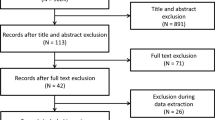Summary
17α-Propylmesterolone is a new synthetic 5α-reduced steroid with a propyl group in C-17 position and a methyl group in the A ring. The antiandrogenic action of 17α-propylmesterolone on the sebaceous glands, testes weights and plasma testosterone concentrations were examined in the animal model of the Syrian hamster. The substance was given systemically (3, 5 or 10 mg/kg) and topically (3 or 5 mg/kg).
17α-propylmesterolone reduced both sebaceous gland size and sebogenesis significantly in a dose-dependent manner. The topical administration was more effective than the systemic treatment.
There was no influence of 17α-propylmesterolone on testosterone concentration in plasma or testes weights although a diminished capacity or absence of free cytoplasmatic androgen receptor sites was detected in the sebaceous glands of the systematically or topically treated Syrian hamster.
17α-Propylmesterolone exerts a potent topical sebosuppressive effect in the animal model. These findings should give rise to human studies and clinical trials.
Similar content being viewed by others
References
Clark JH, Peck EJ (1979) Female sex steroids. Receptors and function. Springer, Berlin Heidelberg New York, pp 4–36
Ebling FJA (1974) Hormonal control and methods of measuring sebaceous gland activity. J Invest Dermatol 62:162–171
Hamilton JB (1941) Male hormone substance: a prime factor in acne. J Clin Endocrinol 1:570–576
Hoffmann K (1981) Photoperiodism in vertebrates. In: Asschoff J (ed) Handbook for behavioral neutrobiology, vol 4. Plenum Publishing Corporation, New York, pp 449–473
Jawny J, Jochum P, Eiermann W (1984) Sensitivity and optimal performance in steroid receptor analysis. J Steroid Biochem 20:595–603
Kligman AH, Shelly WP (1958) An investigation of the biology of the human sebaceous gland. J Invest Dermatol 30:99–125
Knorr D, Beckmann D, Bidlingmaier F, helmig F-J, Sippell WG (1979) Plasma testosterone in male puberty. II. hCG stimulation test in boys with hypospadia. Acta Endocrinol 90:365–371
Lowry OH, Rosenbrough NJ, Farr AL, Randall RJ (1951) Protein measurement with the Folin phenol reagent. J Biol Chem 193:265–275
Luderschmidt C, Plewig G (1977) Effects of cyproterone acetate and carboxylic acid derivates on the sebaceous glands of the Syrian hamster. Arch Dermatol Res 258:185–191
Luderschmidt C, Plewig G (1978) Circumscribed sebaceous gland hyperplasia: autoradiographic and histoplanimetric studies. J Invest Dermatol 70:207–209
Luderschmidt C, Bidlingmaier F, Plewig C (1982) Inhibition of sebaceous gland activity by spironolactone in Syrian hamster. J Invest Dermatol 78:253–255
Luderschmidt C, Eiermann W, Jawny J (1983) Steroid hormone receptors and their relevance for sebum production in the sebaceous gland ear model of the Syrian hamster. Arch Dermatol Res 275:175–180
Luderschmidt C, Hoffmann K, Bidlingmaier F (1984) Influence of photoperiodism on testicular function and sebaceous glands in Syrian hamster. J Invest Dermatol 83:157–160
Neumann F, Steinbeck H (1974) Antiandrogens. In: Eichler O, Farah A, Herken H, Welch AD (eds) Androgens and antiandrogens. Springer, Berlin Heidelberg New York, p 235
Plewig G (1974) Acne vulgaris: proliferative cells in sebaceous glands. Br J Dermatol 90: 623–630
Plewig G, Christophers E (1974) Renewal rate of human sebaceous glands. Acta Dermatol Venereol (Stock) 54:177–182
Plewig G, Kligman AM (1975) Acne. Morphogenesis and treatment. Springer, Berlin Heidelberg New York
Plewig G, Luderschmidt C (1977) Hamster ear model for sebaceous glands. J Invest Dermatol 68:171–176
Plewig G, Luderschmidt C (1981) Effect of antiandrogens on sebaceous glands and acne vulgaris. Animal experiments and studies in acne patients. In: Hammerstein J, Lachnit-Fixon U, Neumann F, Plewig G (eds) Androgenization in women. Excerpta Medica, Amsterdam Oxford Princeton, pp 96–102
Pochi, PE, Strauss JS (1974) Endocrinologic control of the development and activity of the human sebaceous gland. J Invest Dermatol 62:191–201
Scatchard G (1949) The attraction of proteins for small molecules and ions. Ann NY Acad Sci 51:660–672
Toft DO, Sherman MR (1975) Receptor identification by density gradient centrifugation. In: O'Malley BW, Hardman JG (eds) Methods in enzymology, vol XXXVI, part A, Steroid hormones. Academic Press, New York, pp 156–166
Voigt W, Hsia SL (1973) The antiandrogenic action, of 4-androsten-3-one-17α-carboxyl acid and its methyl ester in hamster flank organ. Endocrinology 92:1216–1222
Author information
Authors and Affiliations
Rights and permissions
About this article
Cite this article
Luderschmidt, C., Eiermann, W., Jawny, J. et al. 17α-Propylmesterolone (SH 434): an antiandrogenic sebosuppressive substance not influencing circulating testosterone concentrations. Naunyn-Schmiedeberg's Arch. Pharmacol. 328, 214–218 (1984). https://doi.org/10.1007/BF00512076
Received:
Accepted:
Issue Date:
DOI: https://doi.org/10.1007/BF00512076




